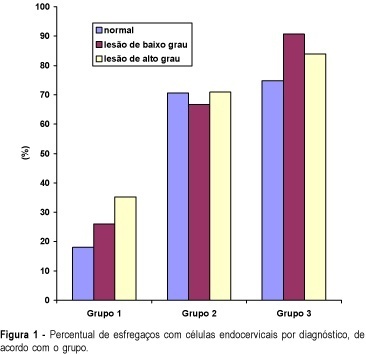Summary
Revista Brasileira de Ginecologia e Obstetrícia. 1999;21(3):127-131
DOI 10.1590/S0100-72031999000300002
Purpose: the frequency of point mutation at codon 12 of the K¾ras gene was determined in paraffin blocks of surgical specimens from patients who had ductal invasive breast cancer. Material and Methods: Fifty surgical specimens blocked in paraffin from patients with ductal invasive breast cancer, with histological degree II and III, were used. The polymerase chain reaction (PCR) was used for amplification of DNA fragments studied. The material cleavage was obtained with restriction fragment length polymorphisms (RFLP). The electrophoresis in agarose gel, with Ladder 123 (GIBCO-BRL) marker, was employed to verify if some mutation had occurred. The results were shown using ultraviolet beam and recorded by photos. Results: mutations at codon 12 of K-ras gene were found in five samples (10%) and all of them were polymorphic for this caracter. The five patients whose tumors expressed mutation were in the postmenopausal period. Four patientes had tumors of histological degree II and one, III.
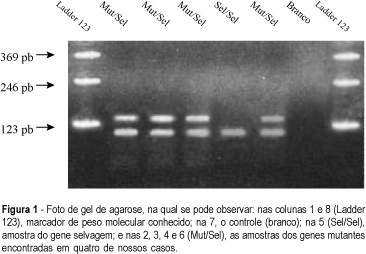
Summary
Revista Brasileira de Ginecologia e Obstetrícia. 2018;40(3):127-136
To analyze the time trend and the factors regarding the diagnosis of latestage breast cancer in Brazil from 2000 to 2012.
We conducted a retrospective cohort study using data from hospital-based cancer registries. Joinpoint regression was used to analyze the time trends of stage at diagnosis. The risk of late-stage presentation was estimated using multinomial logistic regression.
A total of 170,757 cases were analyzed. The median time from diagnosis to treatment was of 43 days (range: 0-182 days). The percentage of cases with late-stage diagnosis decreased from2000 to 2002, with an annual percent change (APC) of -6.6%(95%confidence interval [95%CI]: -7.6--5.5%); it increased from 2002 until 2009, with an APC of 1.1% (95% CI: 0.9-1.3%), and remained stable up to 2012.Women with college education (compared with illiterate women) had less chance of having a late-stage diagnosis (odds ratio [OR]: 0.32; 95%CI: 0.29-0.35). The odds were greater among brown women (OR: 1.30; 95%CI: 1.21-1.41) and black women (OR: 1.63; 95%CI: 1.47-1.82), compared with white women. The odds were also higher for women treated in facilities located and in the Northern region of Brazil (OR: 1.23; 95%CI: 1.04-1.45) and in the Midwest (OR: 1.61;95%CI: 1.34-1.94), compared with those treated in the southern region of the country. Age, histological type, and marital status were some of the other factors that were positively related to staging at the diagnosis.
Access to diagnosis of breast cancer is uneven in Brazil, and women with lower socioeconomic status present a greater probability of having an advanced stage at diagnosis.
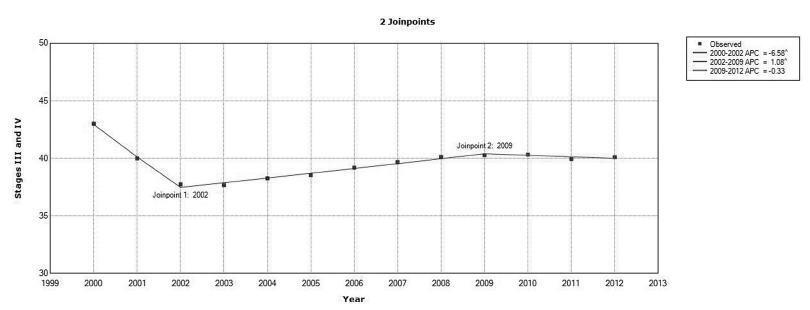
Summary
Revista Brasileira de Ginecologia e Obstetrícia. 2016;38(3):127-131
The purpose of this study is to verify the use ofmedicinal plants by pregnant women treated at four Basic Health Units and at a public maternity facility in Brazil s northeast.
This is a cross-sectional, quantitative study, performed between February and April 2014. The subjects were 178 pregnant women, aged 18 to 42 years. To collect data, a structured questionnaire with dichotomous and multiple choice questions was used. To verify the correlation between the variables, Pearson s chi-square test was used.
The study showed that 30.9% of the pregnant women used medicinal plants, and boldo was the most cited (35.4%). All the plants utilized, except lemongrass, have toxic effects in pregnancy, according to Resolution SES/RJ N° 1757. There was no statistically significant correlation between social class and use of medicinal plants.
The health of the study participants and their unborn children is at risk due to the inappropriate use of medicinal plants.
Summary
Revista Brasileira de Ginecologia e Obstetrícia. 2017;39(3):128-141
To evaluate the effect of supplementation with omega-3 sources on the fatty acid composition of human milk.
The review consisted of the search for articles published in PubMed, Biblioteca Virtual de Saúde (Virtual Health Library[VHL]) andWeb of Science databases using the following keywords: fatty acids, omega-3, human milk and supplementation; for this purpose, we have used the program of research to integrate the services for the maintenance of autonomy (PRISMA) checklist. The following selection criteria were used: articles in English, Portuguese, Spanish or Italian, published between 2000 and 2015, and about studies performed in humans. We found 710 articles that met the established criteria; however, only 22 of them were selected to be part of this study.
All studies found a positive relationship between the consumption of omega- 3 sources and their concentration in humanmilk. The differences in the findings are due to the distinct methods used, such as the specific time of the omega-3 supplementation, the type of omega-3 source offered, as well as the sample size.
Although the studies were different in several methodological aspects, it was possible to observe the importance of omega-3 supplementation during gestation and/or the puerperium.
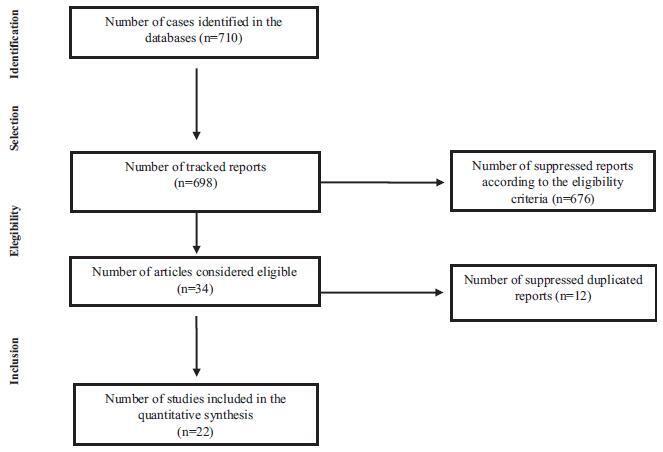
Summary
Revista Brasileira de Ginecologia e Obstetrícia. 2011;33(3):128-132
DOI 10.1590/S0100-72032011000300005
PURPOSE: to evaluate the frequency of cells of the cervical transitional zone (CTZ) in cervicovaginal smears of women older than 40 years. METHODS: we conducted a retrospective study with review of 24,316 Pap smear reports during the period from January 2005 to December 2008, to evaluate the cases without material of the CTZ. Exclusion criteria were: total hysterectomy, smears with severe atrophy or unsatisfactory for analysis, cases without visualization of the cervix or the external orifice of the cervix closed during examination and records without the patient's age. A total of 21,866 cervical-vaginal cytology reports were included in this study. We evaluated the relationship between the presence of material of the CTZ and use of hormone replacement therapy (HRT) in patients aged 40 years or more and the relationship between presence of material of the CTZ and a moderate to intense inflammatory process in patients aged 39 years or less. Data were analyzed statistically by the χ2 test and Odds Ratio. RESULTS: only 11.2% of patients younger than 40 years had no material from the CTZ in their smears, while 47% patients older than 40 years had no material from the CTZ (p=0.0001). Most patients aged 40 years or more (92.1%) did not use HRT and this was not a predictor of incidence of CTZ material in these patients (p> 0.05). In contrast, most patients younger than 40 years without CTZ material (74.5%) had abundant inflammation in the smears (p=0.0001). CONCLUSION: patients aged 40 years or more had a lower incidence of material from the CTZ in cervicovaginal smears, and inflammation was a factor that contributed to the absence of CTZ material in the smears from patients younger than 40 years.
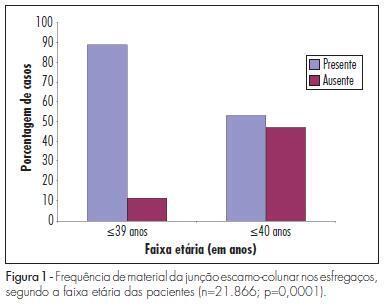
Summary
Revista Brasileira de Ginecologia e Obstetrícia. 2012;34(3):128-132
DOI 10.1590/S0100-72032012000300007
PURPOSE: To evaluate the importance of the oral glucose tolerance test for the diagnosis of glucose intolerance (GI) and type 2 diabetes mellitus (DM-2) in women with PCOS. METHODS: A retrospective study was conducted on 247 patients with PCOS selected at random. The diagnosis of GI was obtained from the two-hour oral glucose tolerance test with 75 g of glucose according to the criteria of the World Health Organization (WHO) (GI: 120 minutes for plasma glucose >140 mg/dL and <200 mg/dL), and the diagnosis of DM-2 was obtained by both the oral glucose tolerance test (DM: 120 minutes for plasma glucose >200 mg/dL) and fasting glucose using the criteria of the American Diabetes Association (impaired fasting glucose: fasting plasma glucose >100 and <126 mg/dL; DM: fasting glucose >126 mg/dL). A logistic regression model for repeated measures was applied to compare the oral glucose tolerance test with fasting plasma glucose. ANOVA followed by the Tukey test was used for the analysis of the clinical and biochemical characteristics of patients with and without GI and/or DM-2. A p<0.05 was considered statistically significant. RESULTS: PCOS patients had a mean age of 24.8±6.3, and body mass index (BMI) of 18.3 to 54.9 kg/m² (32.5±7.6). The percentage of obese patients was 64%, the percentage of overweight patients was 18.6% and 17.4% had healthy weight. The oral glucose tolerance test identified 14 cases of DM-2 (5.7%), while fasting glucose detected only three cases (1.2%), and the frequency of these disorders was higher with increasing age and BMI. CONCLUSIONS: The results of this study demonstrate the superiority of the oral glucose tolerance test in relation to fasting glucose in diagnosing DM-2 in young women with PCOS and should be performed in these patients.
Summary
Revista Brasileira de Ginecologia e Obstetrícia. 2019;41(2):129-132
Ectopic pregnancy is the leading cause of pregnancy-related death during the first trimester, and it occurs in 1 to 2% of pregnancies. Over 90% of ectopic pregnancies are located in the fallopian tube. Abdominal pregnancy refers to an ectopic pregnancy that has implanted in the peritoneal cavity, external to the uterine cavity and fallopian tubes. The estimated incidence is 1 per 10,000 births and 1.4%of ectopic pregnancies. Lithopedion is a rare type of ectopic pregnancy, and it occurs when the fetus from an unrecognized abdominal pregnancymay die and calcify. The resulting “stone baby” may not be detected for decades andmay cause a variety of complications. Lithopedion is a very rare event that occurs in 0.0054% of all gestations. About 1.5 to 1.8% of the abdominal babies develop into lithopedion. There are only ~ 330 known cases of lithopedion in the world. We describe a lithopedion that complicated as intestinal obstruction in a 71-year-old woman.

Summary
Revista Brasileira de Ginecologia e Obstetrícia. 2000;22(3):129-134
DOI 10.1590/S0100-72032000000300002
Purpose: to compare the performance of cervical canal and vaginal cul-de-sac samples for colpocytology testing, in order to diagnose cervical neoplasia. Methods: three sequential groups were constituted: group 1 - 10,048 women with ectocervix and cul-de-sac samples collected with the use of an Ayre spatula; group 2 - 3,847 women with ectocervix, cul-de-sac and cervical canal samples taken with an Ayre spatula and a cytobrush, and group 3 -- 4,059 women with ectocervix and cervical canal samples, using an Ayre spatula and a cytobrush. ANOVA (analysis of variance) and comparison of proportions were utilized for the statistical analysis. Results: the rates of abnormal tests in groups 2 (2.6%) and 3 (2.4%), including all squamous and glandular lesions, were significantly higher than in group 1 (2.0%). The diagnosis rates of low-grade squamous intraepithelial lesion (LGSIL) were not statistically different between the three groups (1.27, 1.25 and 1.07%). On the other hand, the diagnosis rates of high-grade squamous intraepithelial lesion (HGSIL) were statistically higher in groups 2 (0.81%) and 3 (0.77%) than in group 1 (0.54%). The difference between the rates of the second and the third groups did not present any statistical significance. Conclusions: the cervical canal sampling improves the performance of cytologic testing for the diagnosis of HGSIL, while cul-de-sac sampling does not change significantly the performance in diagnosing cervical neoplasia.
